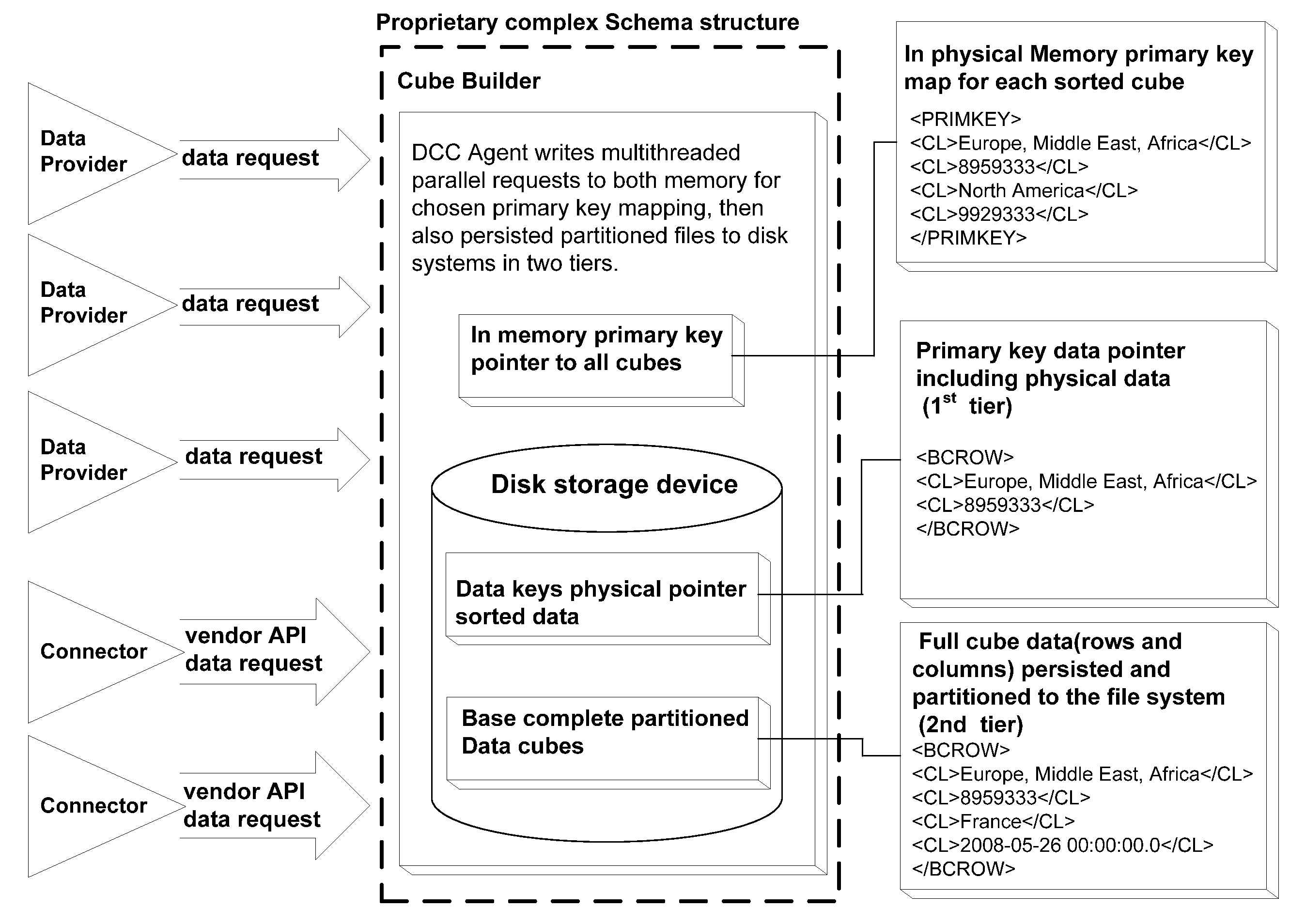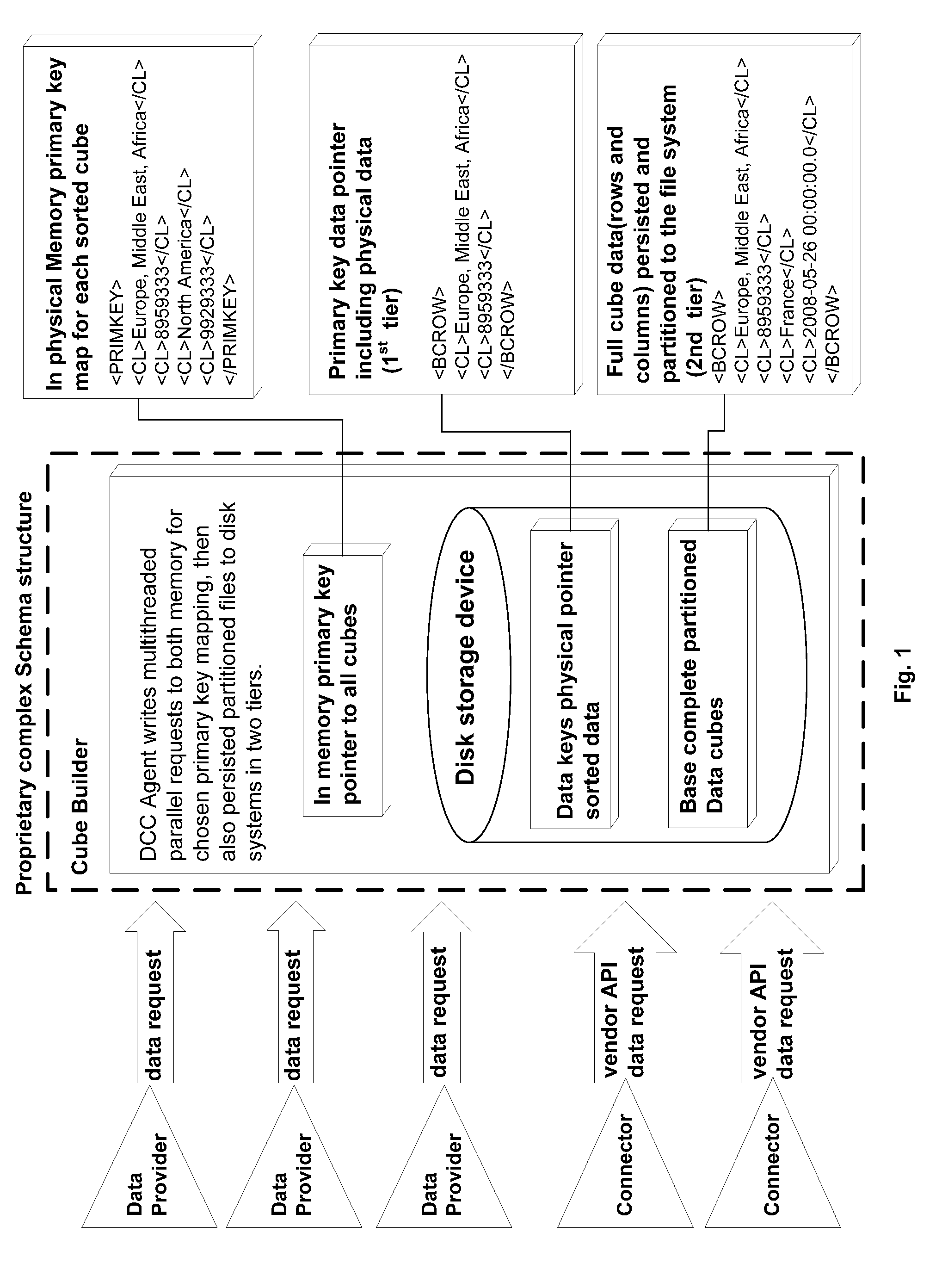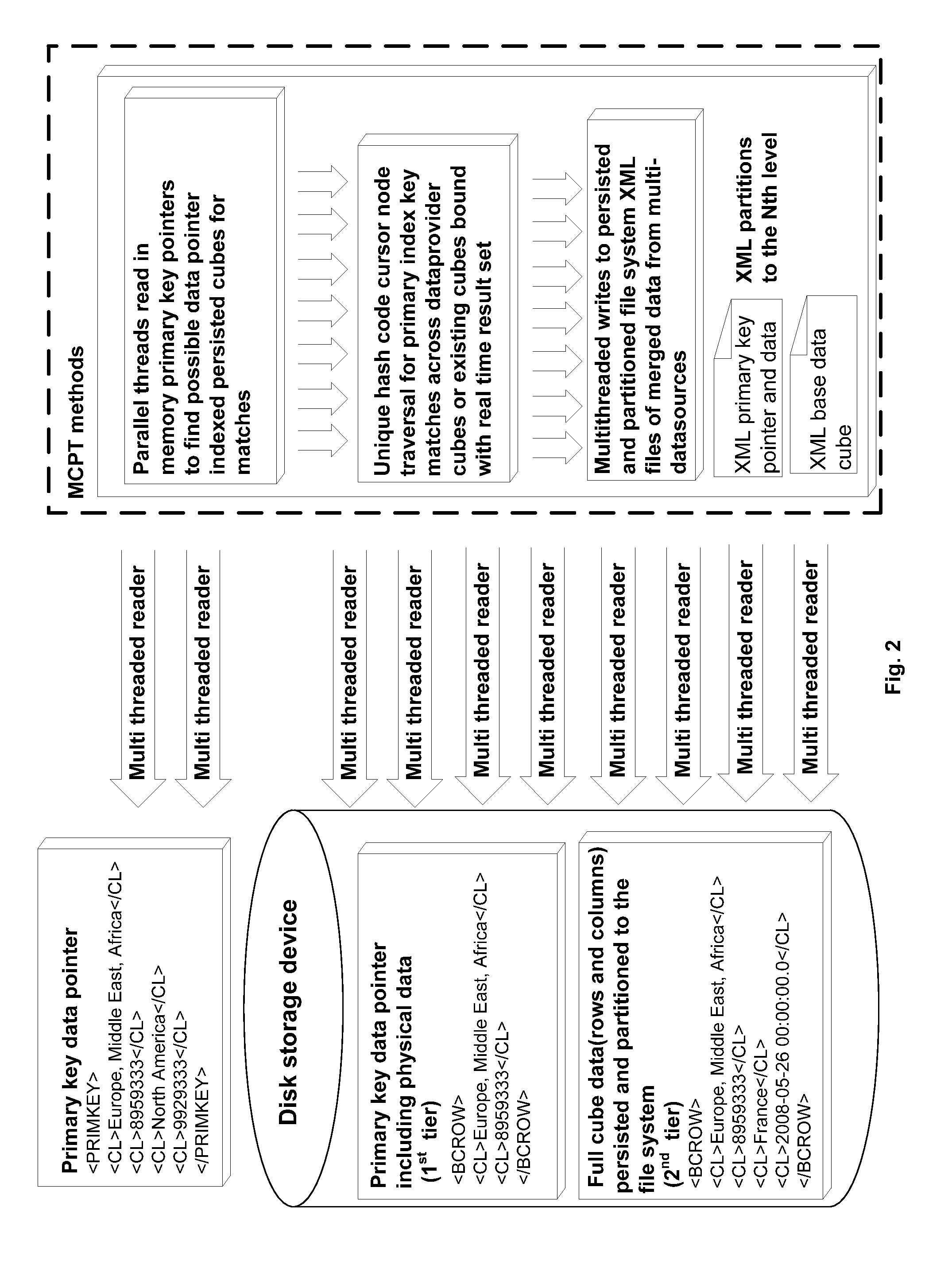Method of Compiling Multiple Data Sources into One Dataset
a data source and data technology, applied in the field of multiple data source compilation, can solve the problems of inefficient relating or linking to each other, operative for disparate datasets, and often addressed how to efficiently handle large datasets from multiple sources, and achieve the effect of facilitating data indexing
- Summary
- Abstract
- Description
- Claims
- Application Information
AI Technical Summary
Benefits of technology
Problems solved by technology
Method used
Image
Examples
Embodiment Construction
[0018]The inventor envisions a method for compiling data from one or more data sources into at least one dataset, such method comprising the steps of connecting to each data source through an application program interface; executing a query from a single server to retrieve data from each data source; organizing each resulting record from said query into a universal data structure; and storing said results in said data structure as an independent dataset.
[0019]The step of connecting to each data source is accomplished by attaching to an application program interface through a connector. The application program interface is known in the art. Generally application program interfaces are provide with the data storage solution that stores the data. The inventor envisions that application program interfaces would be in place for each data source and does not claim application program interfaces as a feature of the invention.
[0020]The connector, through which a connection is established to...
PUM
 Login to View More
Login to View More Abstract
Description
Claims
Application Information
 Login to View More
Login to View More - R&D
- Intellectual Property
- Life Sciences
- Materials
- Tech Scout
- Unparalleled Data Quality
- Higher Quality Content
- 60% Fewer Hallucinations
Browse by: Latest US Patents, China's latest patents, Technical Efficacy Thesaurus, Application Domain, Technology Topic, Popular Technical Reports.
© 2025 PatSnap. All rights reserved.Legal|Privacy policy|Modern Slavery Act Transparency Statement|Sitemap|About US| Contact US: help@patsnap.com



